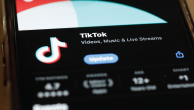The newspaper industry is awash these days in discussions about how to invent a future for itself in the digital age–to become news companies, not just newspapers. The initial results from one of those efforts are in.
The initiative, officially known as “Newspaper Next: the Transformation Project,” began in September 2005 when a research team led by Harvard Business School professor Clayton Christensen unveiled a new kind of business strategy for the newspaper industry, beset by declining circulation and shrinking advertising linage.
The plan, under the umbrella of the American Press Institute, advised publishers to consider the value of their papers largely from the perspective of the consumers’ needs. Ask your readers, they were told, an unusual-sounding question: “What do you hire a newspaper to do for you?”
One year after the project’s launch, newspaper executives, members of Christensen’s team, and representatives of the American Press Institute gathered September 27th at Gannett’s headquarters in McLean, Virginia, to discuss and monitor the progress at seven papers trying to implement that Harvard professors’ plan.
The early verdict from the seven papers: the idea of thinking of their publications as doing a “job” for the news consumer has translated into innovation on both the editorial and business sides. But it is early days.
Those results also dovetailed with the message of Steve Gray, managing director of the “Newspaper Next” project, who argues newspaper companies must rethink the notion of a monolithic newspaper product and instead focus on delivering a portfolio of products. That means creating new niche publications for target audiences, expanding online and appealing to small businesses and online advertisers.
The seven papers involved in the project–the Dallas Morning News, the Desert Sun in Palm Springs California, the Portland Oregonian, the North Jersey Media Group which publishes The Record in Bergen County, the Richmond Times-Dispatch, the Boston Globe and GateHouse Media/Suburban Newspapers of America–reported on their progress.
The Oregonian sought to tap into the “non-consuming” youth population of Portland and learned that its potential audience primarily demands local and entertainment information. The newspaper reports that, based on this knowledge, it is developing a product to meet those needs.
After the Dallas Morning News assessed the needs of the “busy mom audience” in the Dallas/Fort Worth area, the paper came up with the idea for an online planner for child-related activities called GuideFamily.com, which is nearing launch.
Desert Sun executive editor Steve Silberman discussed an exercise in which the paper’s staff was asked to mark up parts of the Sun that they read regularly. He was shocked that his reporters consumed very little of their own product. When he asked them to write in a way that they would be more inclined to read, he said, the result was that stories shrunk in length.
The Boston Globe and Richmond Times-Dispatch, on the other hand, focused more on their marketing strategies. The Globe has begun using search engine marketing (SEM) programs for their website that guarantee advertisers with small budgets a certain number of clicks from high-potential customers.
Both GateHouse Media/Suburban Newspapers of America and the North Jersey Media Group have been enhancing their online presences. Both papers found that current and potential online visitors were looking for greater access to local information and they have started incorporating better local databases, community forums, and local events information into their websites.
Ultimately, the “Newspaper Next” project’s strategy is to encourage newspapers to experiment outside of their core news product to compete with cheaper alternatives, or “disruptive” products, that are proliferating online and as niche publications. Such changes may seem radical to some, or a sign of desperation in a beleaguered industry to others. But in his opening remarks to the conference, Steve Gray said the motivation for change shouldn’t be fear, but enthusiasm. For now, it may be both.
More hurdles, of course, are to come: How well are the papers assessing reader’s needs? How smart and useful are the new ideas? How long will the ideas take to succeed? How much patience do papers have to stick with them? Are papers willing to encourage risk, and even failure? Where is the balance between taking resources from the old newspaper product that makes the money and the new disruptive products that signal the future? The project, though, is encouraging newspaper people to ask the questions.




